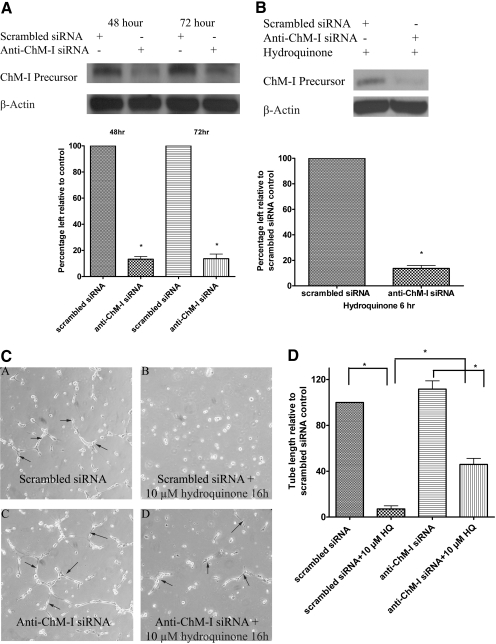Fig. 6.
Pretreatment with anti-ChM-I siRNA in TrHBMECs knocked down ChM-I protein and abrogated the inhibition of tube formation induced by hydroquinone treatment. TrHBMECs were treated with either scramble siRNA or anti-ChM-I siRNA for the indicated times. ChM-I precursor levels were examined in TrHBMEC sonicates by immunoblot analysis. β-Actin was included as a loading control. Blots demonstrated a successful knockdown of ChM-I proteins by anti-ChM-I siRNA treatment (A). Anti-ChM-I siRNA treatment also efficiently inhibited hydroquinone-induced up-regulation of ChM-I (B). Blots are representative of three independent experiments. The density of the bands was determined and plotted as the relative -fold change compared with the scrambled siRNA control. *, p < 0.05 is considered significant compared with scrambled siRNA control (A and B). TrHBMECs pretreated with either scrambled or anti-ChM-I siRNA for 48 h were lifted to perform tube-formation assay in the presence or absence of hydroquinone (10 μM). All cells maintained tube formation abilities in the absence of hydroquinone (C, subpanels A and C). Hydroquinone treatment completely inhibited tube formation in TrHBMECs with scrambled siRNA pretreatment (C, subpanel B) but only partially inhibited tube formation in cells pretreated with anti-ChM-I siRNA (C, subpanel D). Arrows indicate the tube structures. Data represent similar results from four independent experiments. Total tube length per field was measured by image processing and analysis software. *, p < 0.05 (D).

